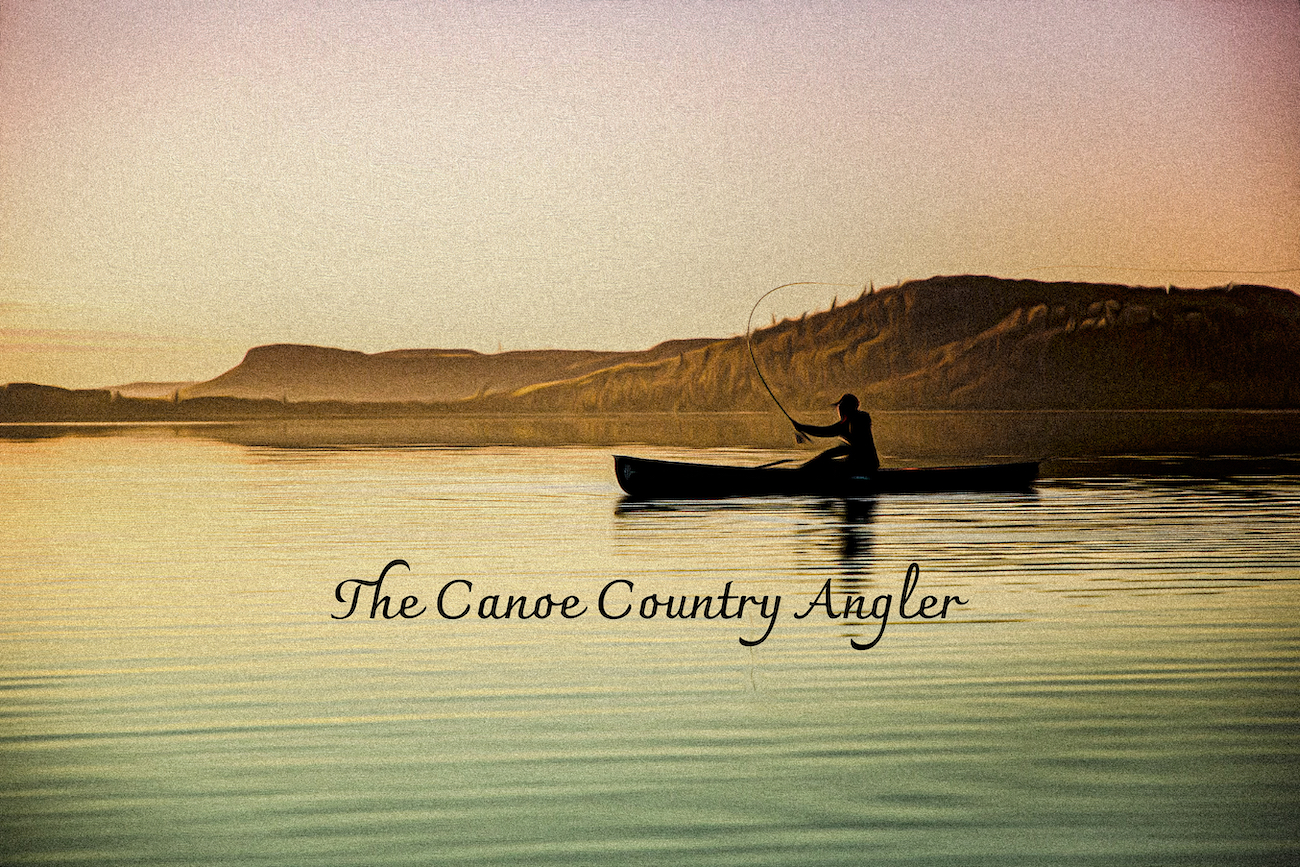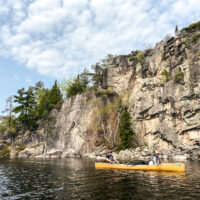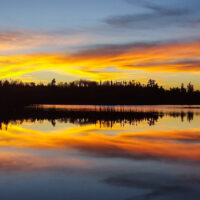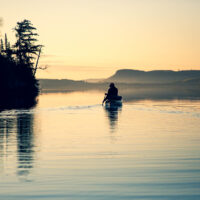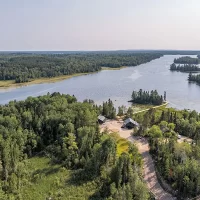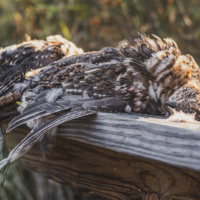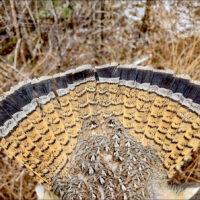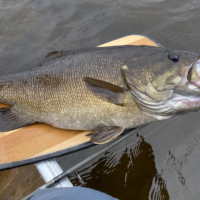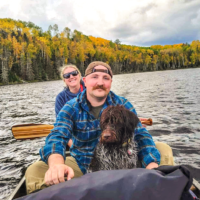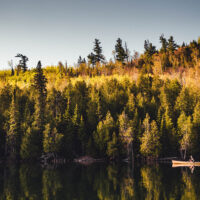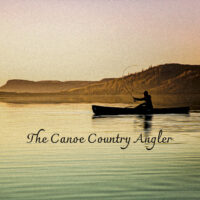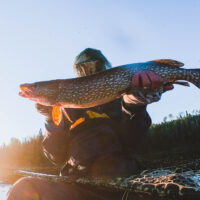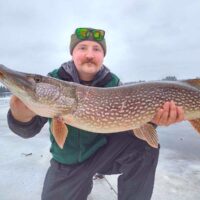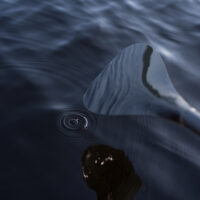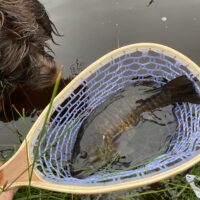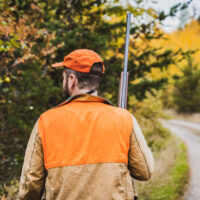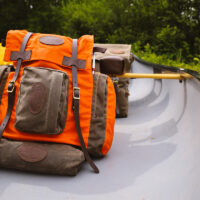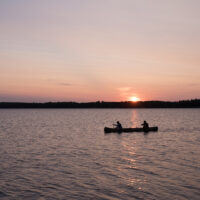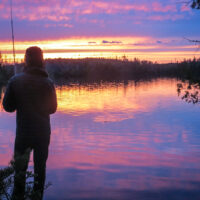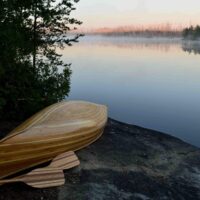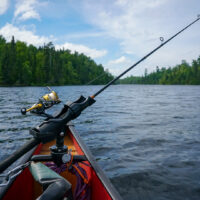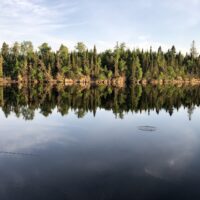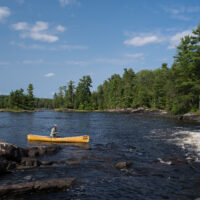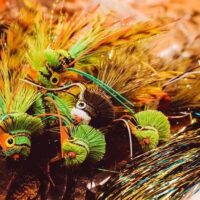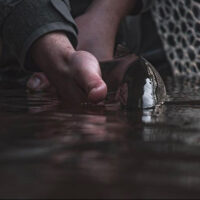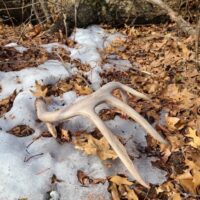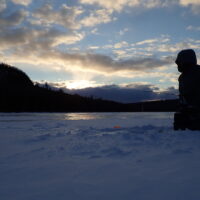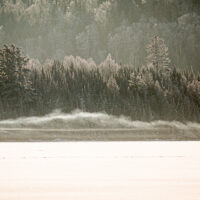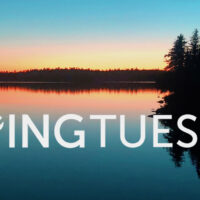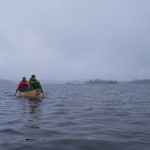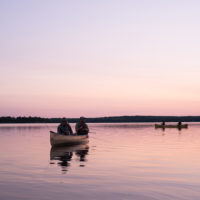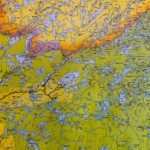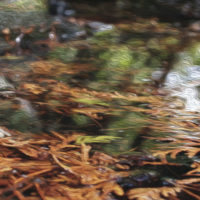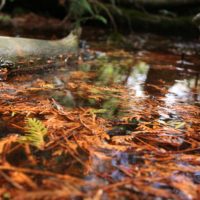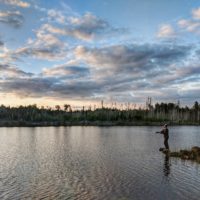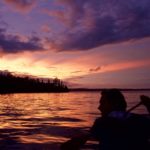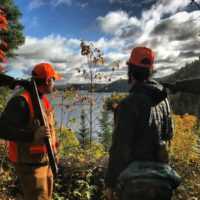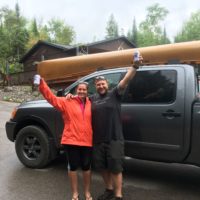The Canoe Country Angler * Vol. 2
March 11, 2024 11:23 amby Matthew Schultz
Success in Simplicity: Streamlining your Boundary Waters Tackle
On the handful of trips I’ve taken into the Boundary Waters, I have seen every manner of angler. From the seasoned minimalist to the person willing to haul every piece of gear they own into the backcountry, it’s all been done. On one particular trip, I even witnessed a group of paddlers hauling multiple 5-gallon pails of bait up and over a 1.5-mile portage, something to this day I can’t imagine doing. Despite all these different approaches, it is usually the person somewhere in between the minimalist and the gear nut who ends up finding the most fishing success in the Boundary Waters. “Keep it simple” is the most common expression you’ll hear from veteran Boundary Waters anglers.
I love fishing. So much so that it sometimes interrupts the expeditiousness of Boundary Waters trips. Despite my obsession, I have always adhered to the great adage from Michael Furtmans The New Boundary Waters and Quetico Fishing Guide (2008), “… if your tackle box has handles, you have too much stuff.” I typically bring a single or double-sided plastic tackle box with a few different lure options. Aside from one bear hunt where my father and I spent all of 30 minutes fishing, I have never been skunked in the Boundary Waters despite my humble tackle selection. Although I fancy myself a decent angler at best, I chalk this up to the incredible fishery that the Boundary Waters Canoe Area is and exclusively using “can’t lose” lures and flies.
I decided to ask around, interviewing people who’ve spent a lot of time fishing in the Boundary Waters to actually figure out how people are fishing in the Boundary Waters and answer a few questions. I kept my questions open-ended on purpose while I interviewed people. “What are your top 5 Boundary Waters lures/flies and briefly, what is your approach to fishing up here?” While we’ll certainly get in-depth with specific tactics in a later volume of The Canoe Country Angler, I wanted this article to instruct people new to fishing the Boundary Waters on what they should start shopping for and to give seasoned anglers a few ideas for lures and baits they may not already be using.
The Top 5 Lures for a multi-species trip to the Boundary Waters Canoe Area
Steve Renneberg | Arrowhead Outdoors Ely, MN
Top 5 Lures:
⅛ – ¼ oz Jig (All species)
The Whopper Plopper (Northern Pike, Smallmouth Bass)
Daredevil Spoon (Northern Pike)
Lake Trout Tube (Lake Trout)
Rapala Shad Rap (All species)
“There’s a reason everybody’s Grandpa has a red and white daredevil spoon in their tackle box. Pike will eat them every time. Keep it simple. I’ll go out in the morning and try a few things. Nothing on top water? Time to figure out what’s going on. Did a front blow through? Maybe they’re deeper or holding tight to structure. You might have to give it a day sometimes.”
Peter Konstantacos | Boundary Waters Outfitters
Top 5 Lures:
¼ oz gold jig with 4” white grub (All species)
Daredevil Spoon (red and white) (Northern Pike)
4” fluke (white) (All species)
Rapala Deep Tail Dancer (Blue Flash) (Walleye, Lake Trout)
Storm Wildeye Curl Tail Minnow (All species)
“My approach to fishing in the Boundary Waters is straightforward. I begin by targeting water current sets if they’re present. Next, I explore main lake points, searching for submerged structures extending from the shoreline. After that, I focus on fishing weed lines and weedy bays. If all else fails, I resort to trolling. I see this as somewhat of a “best practice” to increase your chances of success when fishing on a new lake, particularly if you’re planning to spend just one or two nights there.”
Hansi Johnson | Minnesota Land Trust
Top 5 Flies:
Murdich Minnow (white, chartreuse) (Bass, Northern Pike)
Single Bufford (white and red) (Bass, Northern Pike)
Sparkle Minnow (silver and white) (Bass, Lake Trout, Brook Trout)
Large Blockhead Popper (dark green) (Bass, Northern Pike)
Black Wooly Bugger (all species)
“I generally go super simple when it comes to what I haul for fishing in the BWCA, but I for sure bring what I need to truly target and catch fish… I generally will get out and fish in my backyard before heading to the BWCA, and by doing that, I get a sense of what is currently on the fish’s menu. Between that and fishing reports, I know somewhat what to expect.”
Lukas Leaf | Sportsmen for the Boundary Waters
Top 5 Lures:
Kastmaster Spoon (⅜-1 oz gold & silver) (Lake Trout, Northern Pike)
Slip Bobber with leech (All species)
Heddon Torpedo (Northern Pike, Smallmouth Bass)
Large Mister Twister with attached silver spinner blade (All species)
Live Target Shiner Rattlebait (All species)
“I approach what lures I bring by season and target species, but I always aim to test out a new lure or two. I have 2-3 small tackle boxes organized by species and utility. Preparation is a huge part of the adventure for me, so I really enjoy that aspect of a BWCA trip.”
Matthew Schultz | Sportsmen for the Boundary Waters
Top 5 Lures and Flies:
¼ oz Northland Jig tipped with 3” grub (All species)
Rapala Shad Rap (All species)
Johnson Silver Minnow (Northern Pike)
Sparkle Minnow (All species)
Articulated Predator Popper (Northern Pike, Smallmouth Bass)
“I seldom get to go on a fishing-specific Boundary Waters trip. My fishing time is usually relegated to the end of a long day of paddling or occasionally during the day if we don’t have much water to cover. That means that whatever I tie on has to be reliable. I throw these lures because they just plain work for everything that swims.”
Despite some variation in lure and approach preferences, just about everyone I talked to had something in common: versatility. The Boundary Waters Canoe Area is teeming with multiple different fish species, and if you are interested in catching them all, you’ll probably find yourself using one or more of these offerings. Fortunately, they’re all relatively affordable, easy to find, and will easily fit in a small, packable tackle box.
Rods and Reels
At the end of the day, the rod, line, and reel(s) you bring with you will largely depend on your fishing styles and preferences, but here are some considerations when it comes to packing your fishing rod, reel, and line.
Spinning Set-Up
There are very few fish that can’t be landed on a 6-7’ medium-action spinning rod. That being said, some people prefer a medium-light for a little more give and sensitivity. If you plan on throwing heavy lures like spoons and big topwaters, the extra strength of the medium will be helpful. If you intend to jig a lot, the medium-light may be your best bet.
Choosing your reel should be relatively easy. Simply match your reel with your rod and choose the line that fits the type of fishing you intend to do. Most everything in the Boundary Waters can be responsibly chased with 8 lb monofilament; however, 6 lb is common for more walleye-focused trips. Braided line with a fluorocarbon leader is another great option for anglers who plan on fighting bigger fish or need to pull them out of deep cover. If you see yourself wanting to mix it up during your trip, you can bring a pre-spooled spool with a different line that weighs virtually nothing and takes up very little space. Regardless of which line you use, plan to bring a few wire leaders for the razor-sharp teeth of northern pike. Even the strongest lines fall victim to these tackle thrashers every trip.
Fly Fishing Set-Up
Much like spincasting, you want to bring a fly rod that can do it all. This usually puts you somewhere between a 9’ 6wt and 9wt, depending on the fish you’re after and the size of flies you intend to throw. For the majority of fish you’ll catch, the lower end of the spectrum will suffice, but it would be challenging to land a 40” pike on a 6wt, which is not outside the realm of possibility when you’re fishing in the Boundary Waters. For what it’s worth, an 8 wt is generally considered the most versatile rod weight for fishing these types of northern waters.
As long as you have a fly reel that can hold a lot of backing and has a smooth, consistent drag, you can keep it pretty simple. Unlike spinning lines, however, picking your fly line will make a significant difference in what presentations you can and can’t employ. We’ll get into fly fishing more in-depth in a later volume, but here are a few thoughts on the subject.
A floating fly line allows you to fish surface presentations and subsurface flies but makes deep-water fishing a bit more complicated. While a full sink or sinking tip line allows you to access deeper fish, you lose the ability to present surface flies properly. The solution? Bring another spool that is the opposite of what’s currently on your reel.
You’ll want to bring a relatively wide range of leader and tippet options, as water clarity and target species will change from lake to lake. That being said, you should be well covered with leaders and tippets between 4x and 0x. Always bring along tieable wire to avoid losing all of your flies to northern pike.
Final Thoughts
Most of the lures and fishing styles above can be done effectively without the use of live bait. That being said, if you enjoy the effectiveness and ease of fishing with bait, there are a lot of streamlined options for getting live and/or dead bait into the Boundary Waters that don’t require much additional work. There are few joys greater than the sight of a slip bobber plummeting into the abyss, but this requires live bait. If you have the ability to keep them cool, most people recommend nightcrawlers. They keep well, work for various fish, and don’t weigh much. Leeches are also a great option if you have the time to give them fresh water consistently.
While I don’t see myself upgrading to a tackle box with handles any time soon, I will certainly be looking at using some of the lures that I hadn’t considered in this article. Because Boundary Waters fish aren’t heavily pressured, successfully targeting them doesn’t require much. Keep it simple, don’t be afraid to try new techniques, and cast a line every chance you get.

